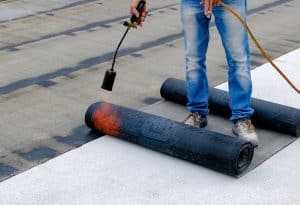Estimated reading time: 7 minutes
Key Takeaways
- Water stains on ceilings and walls are often the first visible signs of roof leaks
- Peeling paint, bubbling wallpaper, and warped surfaces indicate hidden moisture problems
- Musty odours and increasing allergies can signal mould growth from water damage
- Professional waterproofing can prevent structural damage and costly repairs
- Regular inspections of roof, walls, and ceilings can save thousands in repair costs
Introduction: The Silent Threat of Water Damage
Water damage is one of the most destructive forces a home can face, yet it often begins silently, hidden from view. By the time most homeowners notice visible signs, the damage may already be extensive, leading to costly repairs and potential health hazards. In South Africa’s variable climate, particularly in Gauteng where sudden heavy downpours are common, homes are especially vulnerable to water ingress through compromised roofs and building structures.
At TT Waterproofing, we’ve seen firsthand how early detection can save homeowners thousands of Rand in repairs. This article will guide you through the subtle early warning signs of water damage, helping you identify problems before they escalate into major structural issues.
Visual Indicators of Water Damage
1. Ceiling and Wall Discolouration
One of the most common early signs of water damage is the appearance of yellowish-brown stains on ceilings and walls. These discolourations often start small but gradually expand as water continues to seep through the structure. Pay particular attention to:
- Ring-shaped stains that are darker around the edges
- Spots that appear after rainfall
- Discolourations in corners where walls meet ceilings
- Stains around windows or door frames
These visual markers typically indicate that water is finding its way into your home, often through a damaged roof or compromised waterproofing. Addressing these issues promptly with professional roof waterproofing can prevent further infiltration and damage.
2. Peeling Paint and Bubbling Wallpaper
When moisture accumulates behind painted surfaces or wallpaper, it weakens the adhesive bond. This results in:
- Paint that cracks, flakes, or peels away from the wall
- Wallpaper that bubbles, wrinkles, or begins separating at the seams
- Textured surfaces that become uneven or distorted
These signs often appear before more serious damage becomes visible and provide an early opportunity to investigate the source of moisture. Professional waterproofing solutions can address the root cause before the damage spreads throughout your home.
3. Warping and Structural Changes
Materials like wood and drywall absorb moisture, causing them to swell and warp. Look for:
- Doors or windows that suddenly become difficult to open or close properly
- Bulging or bowing walls
- Sagging ceilings
- Warped or buckled flooring, especially in upper stories
These changes in your home’s structure indicate that water has been present long enough to affect structural elements, necessitating immediate attention from waterproofing specialists.
Non-Visual Signs of Water Damage
1. Unusual Odours
A persistent musty smell is often the first indicator of hidden moisture and mould growth. This odour is particularly noticeable:
- When you first enter your home after being away
- In poorly ventilated areas
- During or after rainy periods
- In areas directly below roofing
If you detect these smells, they likely indicate that water is penetrating your home, creating conditions ideal for mould growth. Professional roof repair and waterproofing can eliminate the source of moisture, preventing further development of potentially harmful mould.
2. Increased Allergic Reactions
Water damage often leads to mould growth, which can trigger allergic reactions in sensitive individuals. Watch for:
- Unexplained increase in allergy symptoms when at home
- Recurring respiratory issues
- Eye irritation and sneezing that improves when away from the property
- Worsening asthma symptoms
These health indicators suggest that water damage may already be affecting your indoor air quality through mould growth. Addressing the underlying water ingress with quality roof waterproofing is essential for restoring a healthy living environment.
3. Increasing Water Bills
An unexplained rise in water bills can indicate a hidden leak within your home’s plumbing system. While not always related to roof or external waterproofing issues, these leaks can contribute to water damage and should be investigated as part of your overall moisture control strategy.
Areas Most Vulnerable to Water Damage
1. Roofing Systems
Your roof is your first line of defence against water damage. Common signs of roof-related water issues include:
- Missing, cracked, or curling roof tiles or shingles
- Damaged flashing around chimneys, vents, and skylights
- Clogged gutters and downspouts
- Visible light through roof boards in the attic
Regular inspections of these areas, especially after severe weather, can help identify potential problems before they lead to serious water damage. Professional roof waterproofing services can address vulnerabilities and extend the lifespan of your roofing system.
2. Bathrooms and Kitchens
Areas with plumbing fixtures are particularly susceptible to water damage. Look for:
- Loose or missing tile grout
- Caulking that has deteriorated around baths, showers, and sinks
- Soft flooring near toilets, bathtubs, or under sinks
- Persistent dampness in cabinets or vanities
While these issues may seem minor, they can allow water to penetrate underlying structures, causing extensive damage over time. Proper waterproofing in these high-moisture areas is essential for preventing costly repairs.
3. Basements and Foundations
The lowest points of your home often show the first signs of external water problems:
- Efflorescence (white, powdery deposits) on walls
- Hairline cracks in the foundation
- Damp spots on basement walls or floors
- Pooling water around the foundation after rain
These indicators suggest that water may be compromising your home’s foundation, which can lead to serious structural issues if not addressed with appropriate waterproofing solutions.
Taking Action: What to Do When You Spot Signs of Water Damage
1. Document the Damage
When you notice signs of water damage:
- Take clear photographs of all affected areas
- Note when you first observed the damage
- Record any patterns related to weather or time of day
- Keep a log of any repairs or changes you’ve made
This documentation can be valuable for insurance purposes and helps professionals assess the extent and source of the problem.
2. Address Immediate Concerns
Some temporary measures can help minimize damage while you arrange for professional assessment:
- Place buckets under active leaks
- Remove valuable items from affected areas
- Use fans to improve air circulation in damp spaces
- Check that gutters and downspouts are clear and functioning
While these steps won’t solve the underlying issue, they can help prevent further damage until permanent solutions can be implemented.
3. Consult with Waterproofing Professionals
Water damage is rarely a simple problem with a quick fix. Professional waterproofing specialists can:
- Identify the true source of water ingress
- Assess the extent of existing damage
- Recommend comprehensive waterproofing solutions
- Provide long-term protection against future water damage
At TT Waterproofing, our experienced team can provide expert assessments and tailored waterproofing solutions to address your specific water damage concerns.
FAQ Section
1. How quickly can water damage affect my home’s structure?
Water damage can begin affecting your home’s structure within hours of exposure. Wood can begin warping within 1-2 days, while mould growth can start within 24-48 hours in ideal conditions. The longer water remains present, the more extensive and costly the damage becomes, making early detection and professional waterproofing essential.
2. Is water damage covered by standard home insurance policies?
Most standard home insurance policies cover sudden and accidental water damage, such as from a burst pipe, but may not cover damage resulting from poor maintenance or gradual leaks. It’s important to review your policy details and maintain regular waterproofing maintenance to ensure maximum coverage protection.
3. Can I perform waterproofing repairs myself?
While minor issues like replacing sealant around windows might be suitable for DIY repair, comprehensive waterproofing, especially roof waterproofing, requires professional knowledge and specialized materials. DIY attempts often address symptoms rather than root causes, potentially leading to more extensive damage over time.
Conclusion: Prevention is Better Than Cure
When it comes to water damage, early detection truly is your best defence. By familiarizing yourself with the warning signs outlined in this article, you can take prompt action before minor issues escalate into major structural problems.
Regular inspections of vulnerable areas—particularly your roof, ceilings, and walls—can help identify potential water entry points before significant damage occurs. Professional waterproofing solutions provide lasting protection against water infiltration, saving you thousands in potential repair costs.
Don’t wait until water damage becomes obvious and expensive to repair. Contact TT Waterproofing today for a comprehensive assessment of your property and expert waterproofing solutions tailored to your home’s specific needs. Our experienced team serves homes and businesses throughout Gauteng, providing peace of mind through quality workmanship and proven waterproofing methods.
Call us at 078 057 9663 or visit our offices at 6 Sebopa St, Mamelodi – RD5, Pretoria, 0122 to discuss how we can help protect your most valuable asset from the devastating effects of water damage.



